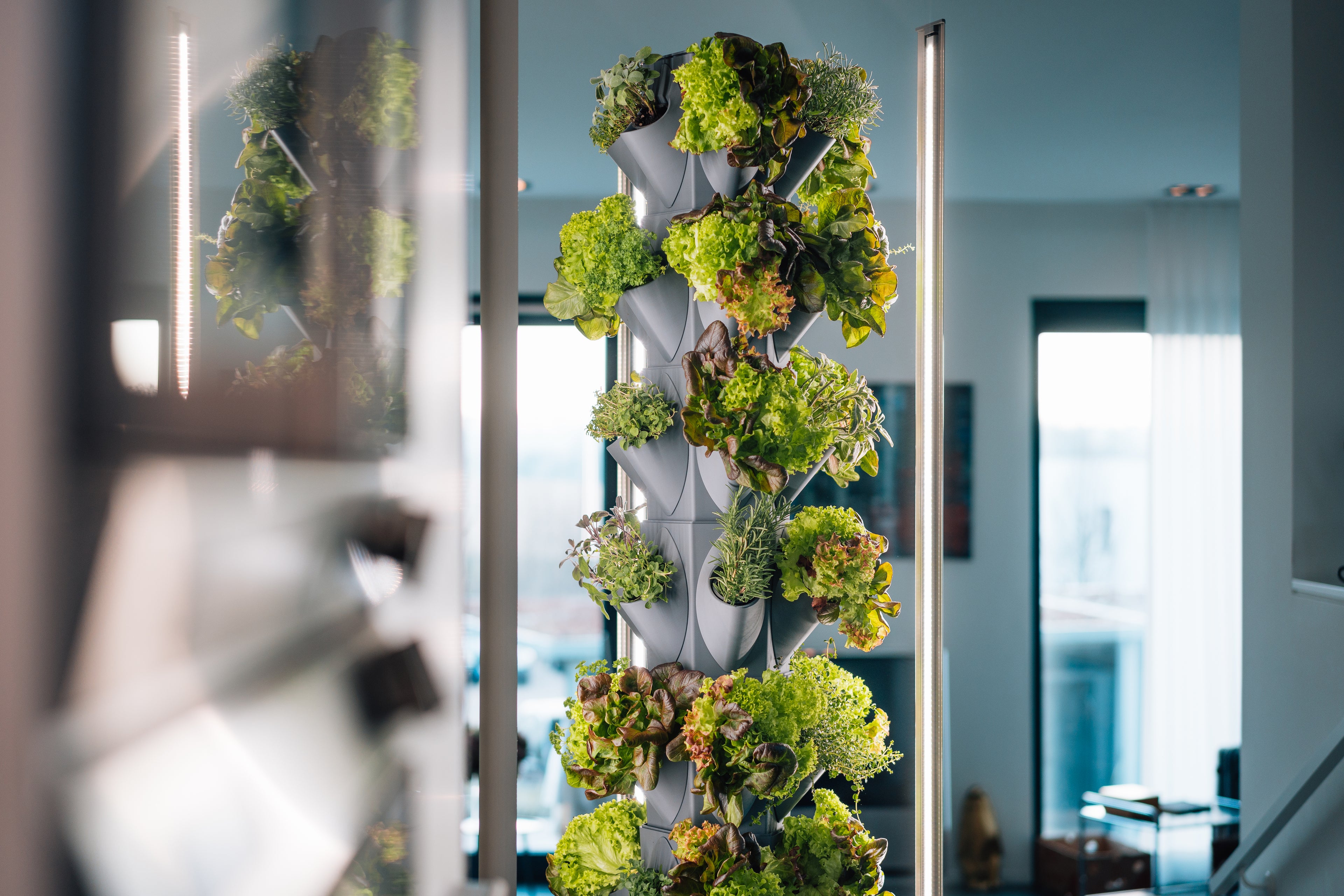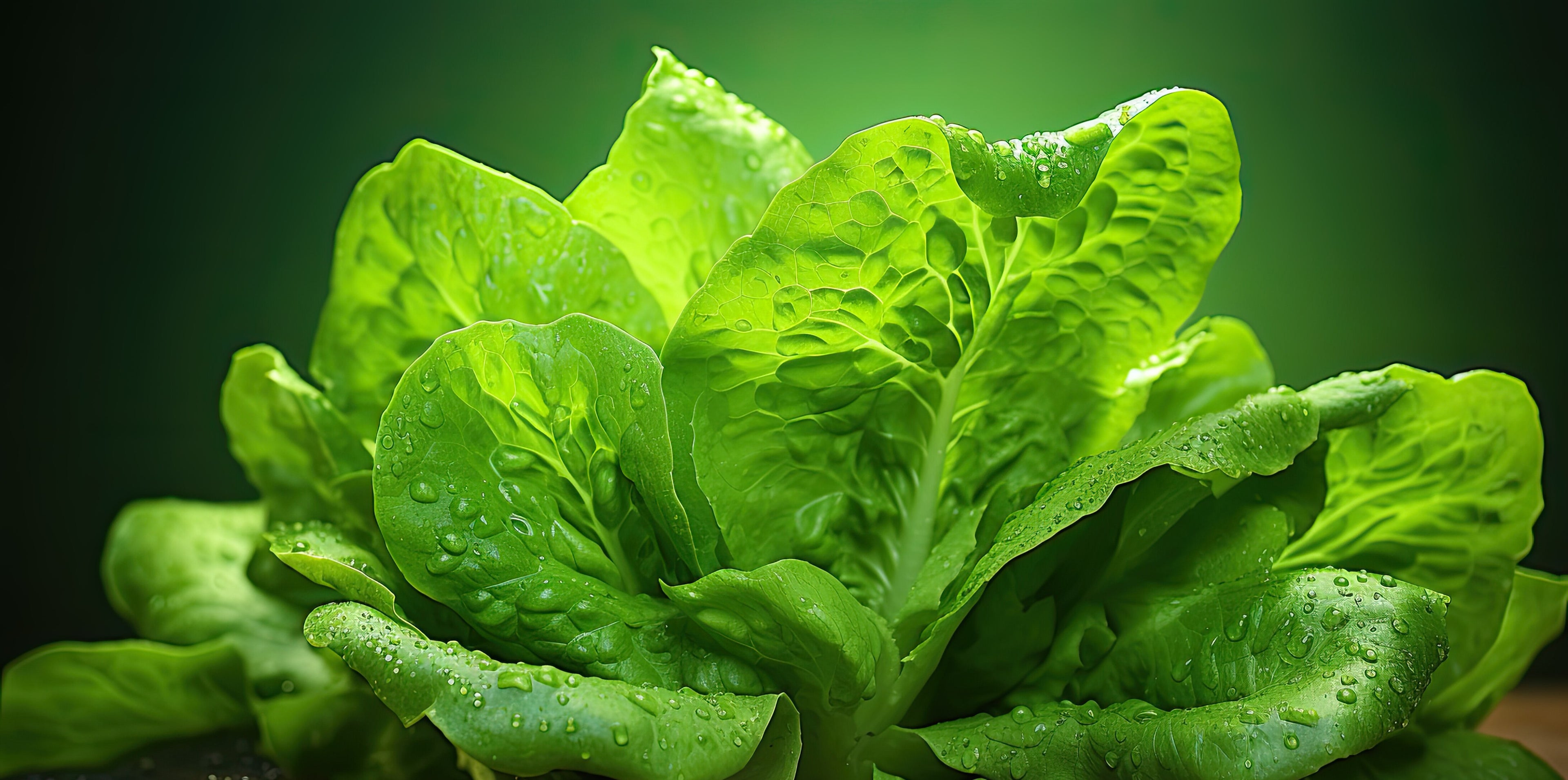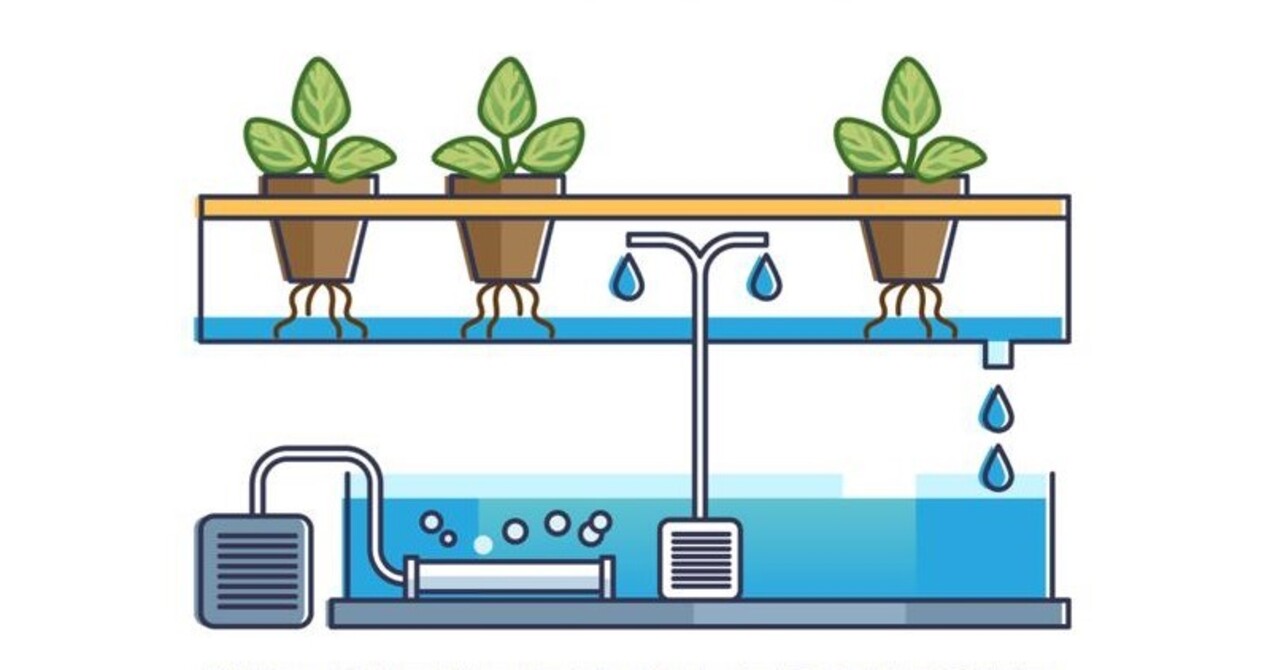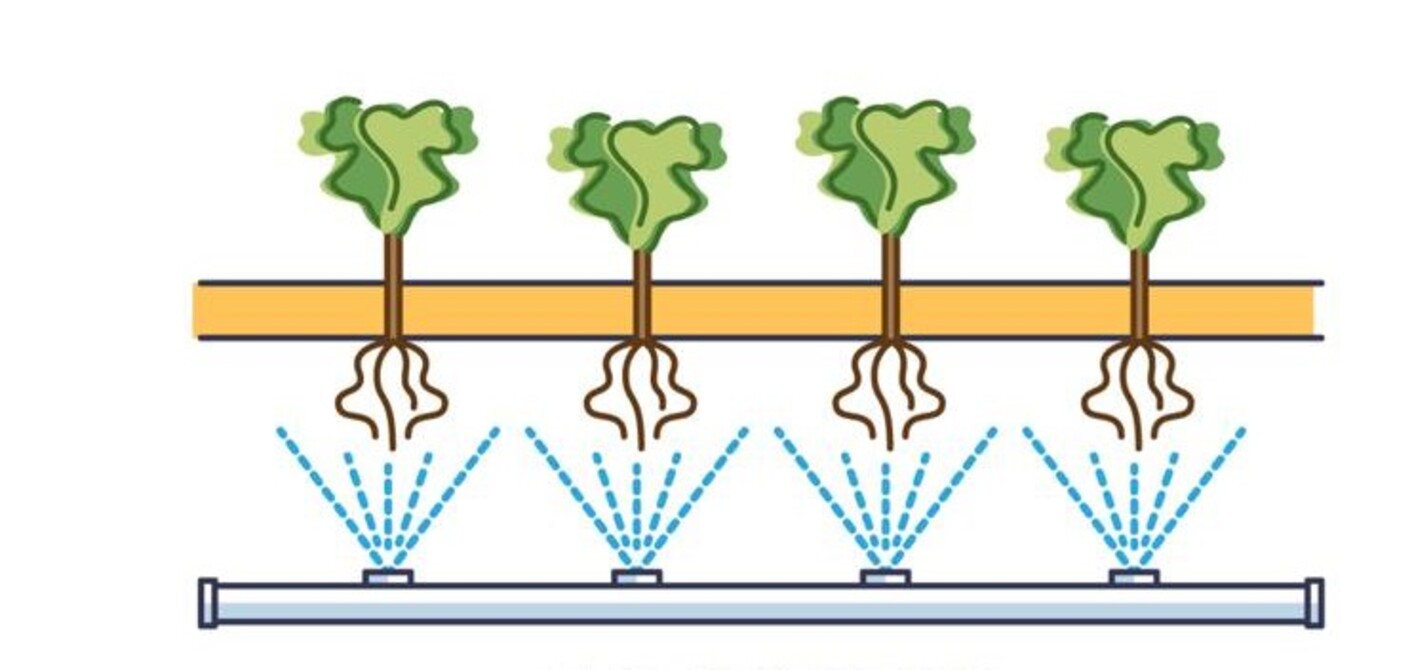
Aeroponics simply explained: function, advantages & application
02/29/2024 - pia from greeny+
In a world where sustainability of agriculture is becoming increasingly important, aeroponics has attracted a lot of attention as an innovative farming method. Aeroponics promises not only more efficient use of resources, but also increased crop yields and precise control over plant growth .
We explain the basics of aeroponics right through to its practical application, and you'll find out how you can use it for yourself.
-
The essentials in brief:
- Aeroponics allows plants to grow without soil by hanging the roots in the air and spraying them with a fine mist solution of water and nutrients.
- Thanks to its efficiency, versatility and environmental friendliness, aeroponics offers a fascinating solution to the challenges of conventional agriculture as well as indoor gardening.
- Thanks to its numerous advantages, aeroponics proves to be an extremely effective method in both commercial and private sectors, providing quick results.

What is Aeroponics?
Aeroponics (a subset of hydroponics ) is an advanced method of growing plants that differs from traditional farming methods by eliminating the use of soil or other substrates . However, compared to hydroponics, where the roots of plants are kept in a water-based medium, aeroponics involves cultivating plants in an airy environment .
How does aeroponics work?
The heart of aeroponics lies in the precise supply of water, nutrients and oxygen to the plant roots . In contrast to conventional agriculture, in which plants are rooted in the earth and absorb their nutrients from the soil, aeroponics relies on an innovative technique in which the roots “float” in a nutrient solution . This solution is usually mixed from water and special nutrients. The roots of the plant hang in the air and are regularly moistened with a fine mist solution of water and nutrients.
The key principle of aeroponics is to provide the optimal amount of water, nutrients and oxygen to the plant roots by regularly spraying them with the fine mist solution. This allows plants to efficiently absorb all the nutrients they need , which is a distinct advantage as it results in rapid growth, higher yields and improved crop quality. Additionally, the flexibility of aeroponics allows for the cultivation of a wide variety of plant species in different environments and climates.
Overall, aeroponics is an exciting and promising development in modern agriculture that has the potential to fundamentally change the way we grow food.
Benefits of Aeroponics
Aeroponics offers a number of advantages over traditional growing methods:
Collapsible content
Efficient use of resources
By supplying the roots directly with water and nutrients, aeroponics enables more efficient use of resources as no excess nutrients remain in the soil.
Higher crop yields
Precise control over environmental factors such as light, temperature and humidity, as well as the continuous supply of nutrients to the roots, lead to faster growth and higher yields compared to traditional farming methods.
Reduced water requirements
Because the nutrient solution circulates in a closed system and minimal evaporation occurs, water requirements can be significantly reduced in aeroponics compared to soil growing.
Pest and disease control
Because the plants are suspended in the air and not in contact with the ground, they are less susceptible to diseases and pests that live in the soil. This reduces the need for pesticides and fungicidal treatments .
Shorter growth cycles
By optimally supplying the roots with water, nutrients and oxygen , plants can grow faster and shorten their growth cycles , resulting in higher productivity.
Adaptability to different environments
Aeroponic systems can be configured to meet the specific needs of different plant species and environments . This allows crops to be grown in regions with extreme climatic conditions or in areas with poor soil quality.
Improved quality of the crop
Precise control over environmental factors and optimal supply of nutrients to roots result in improved crop quality, including better taste, texture and nutritional content of plant products.
Space saving
Aeroponic systems can be grown vertically, meaning they require less floor space than traditional growing spaces. This allows plants to be grown efficiently even in urban environments or areas with limited space.
Aeroponics vs. Hydroponics : What are the differences?
Although aeroponics and hydroponics are both based on the concept of soilless cultivation (plants can be grown without the use of conventional soil or soil substrates) , there are differences between the two plant growing methods.

While hydroponics cultivates the roots of plants in a constantly water-soaked medium such as clay balls or coconut fiber,...

... in aeroponics they hang freely in the air and are sprayed with a fine mist solution. This enables an even more efficient supply of water, nutrients and oxygen to the roots.
Aeroponics systems: structure and functions
Aeroponic systems offer a diverse selection of sizes and configurations, ranging from small home setups to large commercial facilities . Their purpose is to create an optimal environment for plant growth by ensuring a continuous supply of water, nutrients and oxygen to the roots.
The essential components of an aeroponics system include the root chamber , where the plant roots hang and grow, the pump , which transports the nutrient solution from the reservoir to the sprayer, and a sprayer or nozzles that atomize the nutrient solution. There is also the reservoir , which is used to store the nutrient solution.
Modern aeroponics systems are often equipped with additional components that support plant growth. This includes lighting systems, drainage systems, as well as sensors and automated controls that monitor and ensure an optimal environment.
An example of an aeroponics system is the greenyGARDEN HOME , which offers a wide range of functions and features to promote and facilitate plant growth in homes.
Growing aeroponics: This is what you should know beforehand!
Before deciding to grow aeroponics, there are some important aspects to consider . While this innovative farming method offers many benefits, it also requires a certain level of understanding and commitment to be successful.
Here are some important points to consider before growing aeroponics:
Collapsible content
1. Choosing the right plant species
Not all plants are equally suitable for aeroponic cultivation. Some plant species are better adapted to the airy environment and the particular type of nutrient supply than others. Before you start growing, you should make sure that the plants you choose are suitable for aeroponic cultivation.
Spinach, lettuce, basil and mint are particularly suitable for those new to aeroponics to familiarize themselves with the growing method.
2. Basic understanding of the system
It is important to have a basic understanding of how an aeroponic system works and what components are needed. Inform yourself thoroughly about the structure and functionality of the system in order to avoid possible problems and achieve optimal results.
3. Maintenance and cleaning of the system
An aeroponic system requires regular maintenance and cleaning to function smoothly and ensure healthy plant development. This includes regularly checking and cleaning the spray nozzles, monitoring the water quality in the reservoir, and removing any debris or contaminants that could affect the system.
4. Monitoring environmental factors
Successful aeroponic cultivation requires close monitoring and control of various environmental factors such as temperature, humidity, light and pH . Make sure you have the necessary gauges and controls to monitor these factors and adjust as necessary to create optimal growing conditions for your plants.
5. Plant care and watering
Although aeroponic growing requires less maintenance than traditional soil growing, it is still important to check plants regularly and ensure they are growing healthily.
This includes regular pruning, removing dead or diseased parts of the plant, and monitoring root growth . Make sure the roots of the plants are adequately sprayed with the nutrient solution and that there are no blockages in the spray nozzles.
6. Costs and investments
Aeroponic cultivation typically requires some initial investment in equipment and infrastructure, including the system itself, lighting, meters, and other accessories. Make sure you carefully consider the costs and set a realistic budget for your aeroponic growing projects.
7. Experiment and learn
Aeroponic cultivation is an innovative cultivation method that requires constant experimentation and learning . Be willing to try new techniques, make mistakes and learn from them to continually improve your skills as an aeroponic gardener and achieve the best results.
By considering these important aspects and thoroughly preparing for aeroponic cultivation, you can take full advantage of the benefits of this innovative cultivation method and successfully cultivate healthy and productive plants.
Conclusion: The future of agriculture with aeroponics
Aeroponics is undoubtedly one of the most exciting developments in modern agriculture. With its efficient use of resources and precise control over plant growth, it offers significant advantages for higher yields and high-quality harvests.
Precise supply to plant roots and control over environmental factors create optimal conditions to increase yields and ensure consistent crop quality .
Aeroponics offers a path to a more sustainable future for agriculture by reducing the need for chemical fertilizers and pesticides while enabling more efficient use of resources such as water and land.

By embracing innovative technologies like aeroponics, we can create a more sustainable and livable future for everyone. Aeroponics is a signpost to a new era of agriculture that is in harmony with the needs of our planet.
Also interesting:
View all-
Smart Garden – Die Zukunft mit Hydroponik
Einführung in das Konzept Smart Garden Was ist ein Smart Garden? Ein Smart Garden kombiniert innovative Technologien mit Gartenbau. Das Ziel sind optimale Bedingungen für das Pflanzenwachstum bei automatischer Steuerung....
Smart Garden – Die Zukunft mit Hydroponik
Einführung in das Konzept Smart Garden Was ist ein Smart Garden? Ein Smart Garden kombiniert innovative Technologien mit Gartenbau. Das Ziel sind optimale Bedingungen für das Pflanzenwachstum bei automatischer Steuerung....
-
Hydroponik mit Drip-Systemen einfach erklärt
Du möchtest nachhaltig und effizient gärtnern, aber möglichst wenig Aufwand haben? Dann könnte das hydroponische Drip-System (Tröpfchenbewässerung) genau richtig für dich sein. In diesem Artikel erfährst du mehr übers Drip-System. ...
Hydroponik mit Drip-Systemen einfach erklärt
Du möchtest nachhaltig und effizient gärtnern, aber möglichst wenig Aufwand haben? Dann könnte das hydroponische Drip-System (Tröpfchenbewässerung) genau richtig für dich sein. In diesem Artikel erfährst du mehr übers Drip-System. ...
-
Entdecke das DFT-System (Deep Flow Technique) -...
Was unter der Bezeichnung Hydroponik bekannt ist, eröffnet Dir eine spannende Welt, in der Pflanzen ohne Erde gedeihen – nachhaltig, effizient und platzsparend. Das sogenannte DFT-System (Deep Flow Technique) ist eine...
Entdecke das DFT-System (Deep Flow Technique) -...
Was unter der Bezeichnung Hydroponik bekannt ist, eröffnet Dir eine spannende Welt, in der Pflanzen ohne Erde gedeihen – nachhaltig, effizient und platzsparend. Das sogenannte DFT-System (Deep Flow Technique) ist eine...
1
/
of
3

